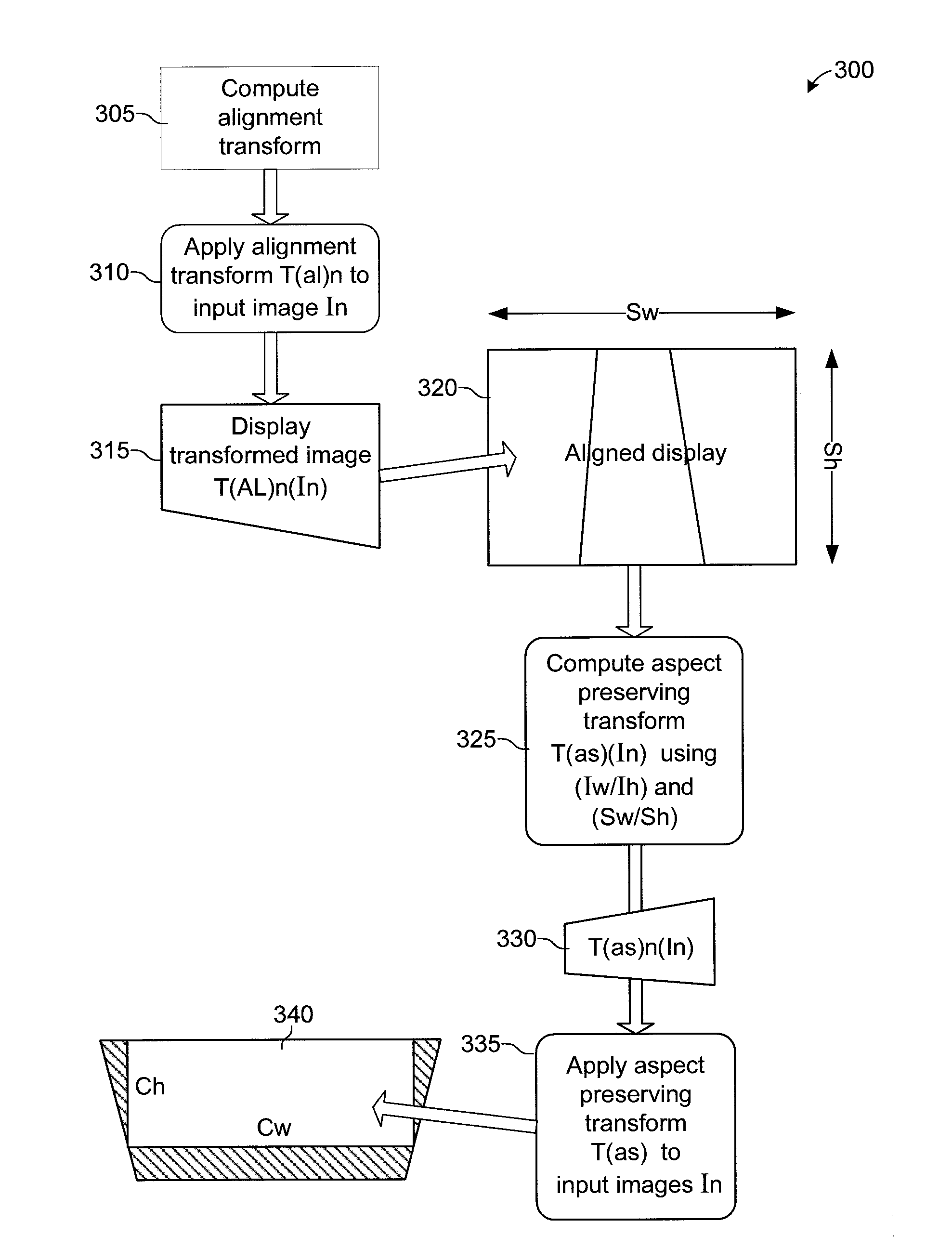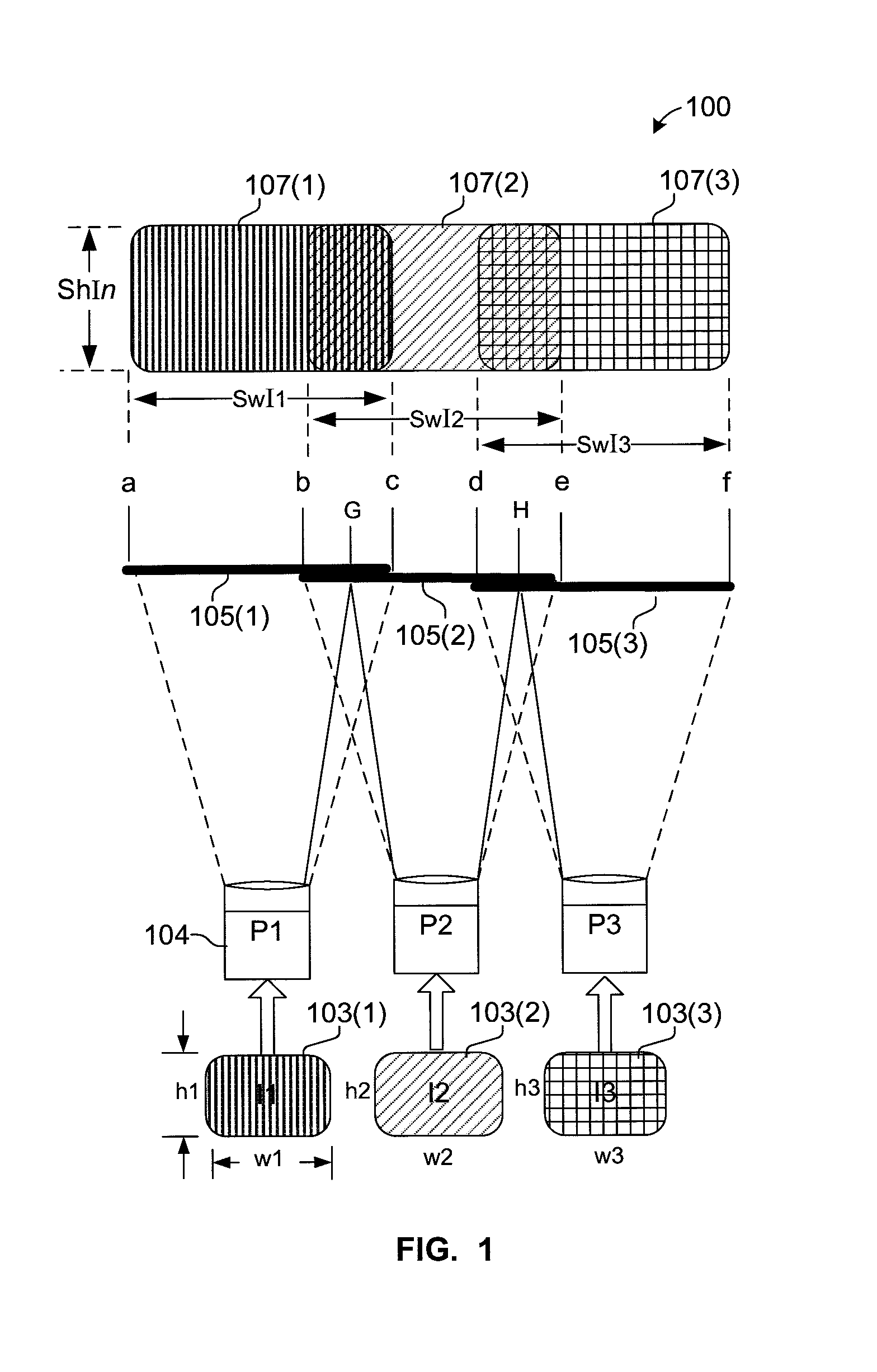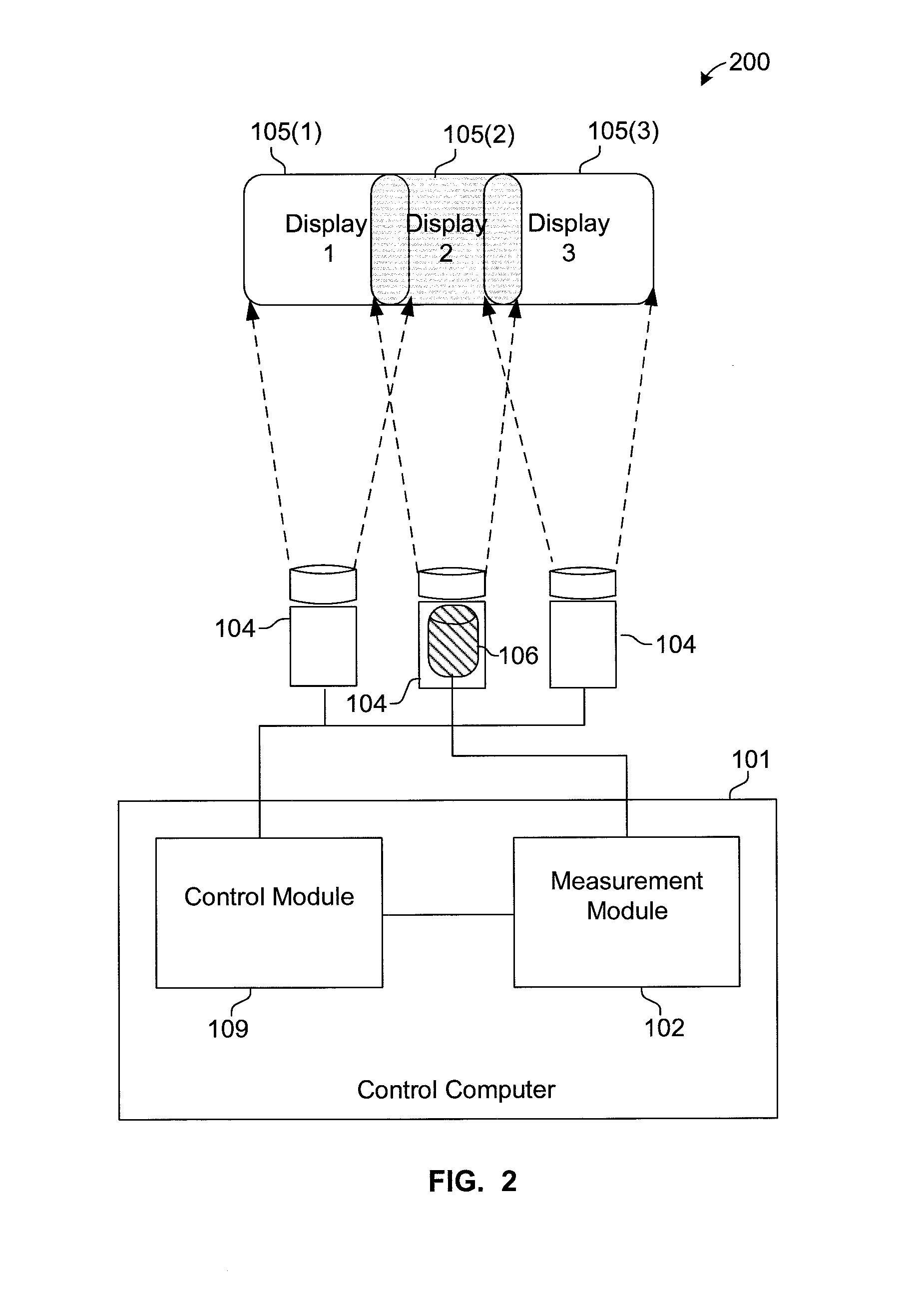System And Method For Image Aspect Preservation In Multiple Projector Alignment
a technology of image aspect preservation and alignment, applied in the field of system and method for image aspect preservation in multiple projector alignment, can solve the problems of unwanted distortion, significant changes in the effective aspect ratio of the display, and the input source's aspect ratio is not typically retained
- Summary
- Abstract
- Description
- Claims
- Application Information
AI Technical Summary
Benefits of technology
Problems solved by technology
Method used
Image
Examples
Embodiment Construction
[0014]FIG. 2 is a diagram of one exemplary embodiment 200 of the present system, and FIG. 3 shows an exemplary processing pipeline 300 in one embodiment of the present system. Although FIGS. 1 and 2, and subsequent examples herein address a three-projector system, it should be understood that the present system and method is operable with any practicable number and arrangement of projectors Pn [reference no. 104].
[0015]As shown in FIGS. 1-3, initially, at step 310, each of the constituent input images I1, I2, I3, is first passed through an alignment transform T(al)n that aligns those images onto respective parts of display surface 105(1-3). The total displayable width and height, including the overlapped area, of those constituent images Sh(I) and Sw(I) is then determined. These values can be determined through a user feedback mechanism, or automatically derived using the information contained in the alignment transform data. For example, a user may interactively specify a rectangul...
PUM
 Login to View More
Login to View More Abstract
Description
Claims
Application Information
 Login to View More
Login to View More - R&D
- Intellectual Property
- Life Sciences
- Materials
- Tech Scout
- Unparalleled Data Quality
- Higher Quality Content
- 60% Fewer Hallucinations
Browse by: Latest US Patents, China's latest patents, Technical Efficacy Thesaurus, Application Domain, Technology Topic, Popular Technical Reports.
© 2025 PatSnap. All rights reserved.Legal|Privacy policy|Modern Slavery Act Transparency Statement|Sitemap|About US| Contact US: help@patsnap.com



